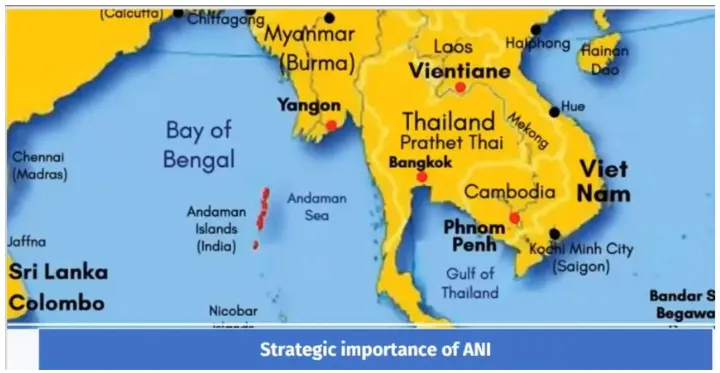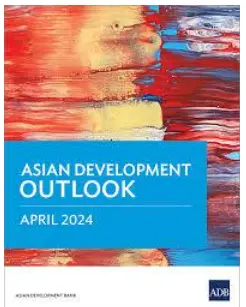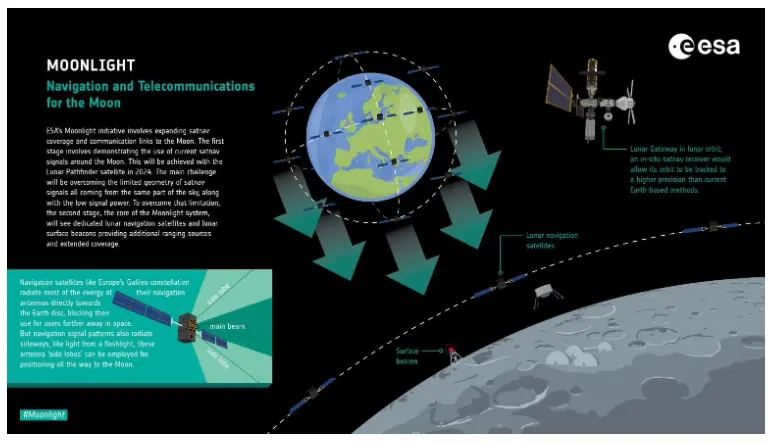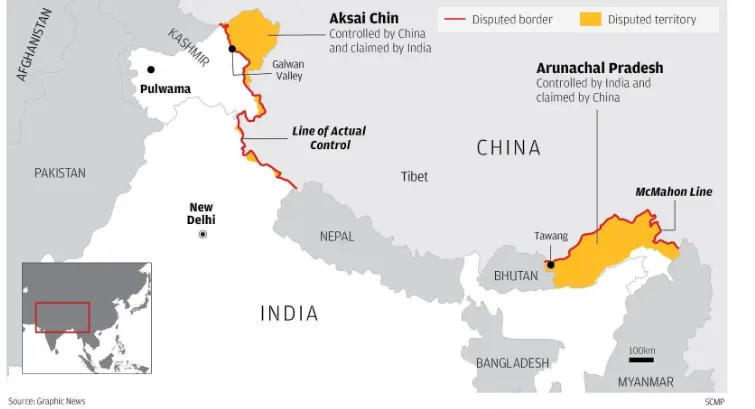Thursday, 18th April 2024
Strategic Significance of the Andaman and Nicobar Islands
In News: The renewed focus of the Indian government on developing the Andaman and Nicobar Islands (ANI) highlights their strategic importance in the Indo-Pacific region. This emphasis has led to concerted efforts to bolster infrastructure and security in the region.

Strategic Importance of the Andaman and Nicobar Islands
- Geopolitical Significance: Located 700 nautical miles southeast of the Indian mainland, the Andaman and Nicobar Islands significantly extend India's exclusive economic zone, potentially harboring valuable hydrocarbon and mineral resources.
- Strategic Location: Situated astride the Malacca Strait, a critical maritime chokepoint, the islands are pivotal for India's ability to monitor and project power in the Indo-Pacific region, with over 30% of the world's traded goods passing through this strait annually.
- Maritime Boundaries: With maritime boundaries shared with Myanmar, Thailand, Indonesia, and Bangladesh, the islands provide India with substantial ocean space under UNCLOS, enhancing its strategic maritime position.
- Defense Asset: Serving as the first line of defense against potential threats from the East, particularly amidst China's growing influence, the Andaman and Nicobar Islands are crucial for safeguarding India's maritime security interests.
- Collaboration Hub: Port Blair has the potential to become a regional hub for naval cooperation, facilitating initiatives such as disaster relief, medical aid, counter-piracy, and search and rescue operations.
Challenges to the Development of the Andaman and Nicobar Islands
- Policy Prioritization: Historically lacking political prioritization, the strategic importance of the islands has only recently been recognized, necessitating a shift towards development initiatives.
- Geographic Constraints: Challenges stemming from the islands' distance from the mainland and difficulties in infrastructure development pose significant obstacles to their comprehensive development.
- Environmental Regulations: Complex environmental clearance procedures and regulations on forest and tribal conservation add layers of complexity to development efforts.
- Coordination Issues: The involvement of multiple ministries and agencies introduces coordination challenges, often conflicting with immediate political gains.
Strategic Infrastructure Development Needed in the Andaman and Nicobar Islands
- Maritime Domain Awareness: Enhancing comprehensive maritime domain awareness and surveillance capabilities to bolster deterrence against potential naval threats.
- Infrastructure Enhancement: Developing infrastructure to support India's maritime economy, including transportation and connectivity improvements, particularly in the southern group of islands.
- Connectivity Improvements: Revitalizing plans to connect the islands to the mainland through Submarine Optical Fibre Cable (OFC) to provide cheaper and better connectivity, reducing dependence on mainland support.
- Military Presence: Increasing military forces and deploying appropriate assets at the Andaman Nicobar Command (ANC) to maintain island security, including basing surveillance and fighter aircraft and conducting frequent detachments.
- International Collaborations: Exploring partnerships with organizations such as the Quad and Indo-Pacific Oceans Initiative (IPOI) for development initiatives, seeking infrastructure development concessions akin to those on India's northern borders.
|
UPSC Previous Year Questions Prelims (2014) Q. Which one of the following pairs of islands is separated from each other by the ‘Ten Degree Channel’? (a) Andaman and Nicobar Ans: (a) Prelims (2014) Q2. Which of the following have coral reefs?
Select the correct answer using the code given below: (a) 1, 2 and 3 only Ans: (a) Prelims (2009) Q3. In which one of the following places is the Shompen tribe found? (a) Nilgiri Hills Ans: (b) |
Source: IE
India’s Goods Exports Touches New Height
In News: In March 2024, India's merchandise exports surged to a peak of USD 41.68 billion, marking a significant increase compared to the fiscal year 2022-23.
Analyzing Current Export Data
India's goods exports in March 2024 reached USD 41.68 billion, experiencing a 0.67% decline from the previous fiscal year, while imports dropped by 6% to USD 57.3 billion during the same period. This resulted in a goods trade deficit contraction to USD 15.6 billion, the lowest in 11 months.
Key Factors Impacting Export Trends
- Decline in Gold Imports: Gold imports sharply fell by 53.6% in March to USD 1.53 billion.
- Contribution of Non-Oil, Non-Gold Imports: The decline in non-petroleum, non-gold imports was a significant factor in the overall decrease.
- Surge in Silver Imports: Interestingly, silver imports surged to USD 816.6 million.
Projections and Drivers for FY 2023-24
Despite global challenges such as the Ukraine war and the West Asian crisis, overall exports are estimated to surpass the previous year's record, reaching USD 776.68 billion, representing a positive growth of 0.04%. Key drivers include growth in electronic goods, drugs & pharmaceuticals, and engineering goods exports.
Strategies to Enhance India's Exports
- Cost Optimization: Addressing challenges related to land acquisition, power tariffs, and capital availability is crucial for reducing business costs.
- Enhancing Competitiveness: Improving infrastructure, streamlining labor laws, and supporting MSMEs can enhance overall competitiveness.
- Market Access via Trade Treaties: Actively negotiating and signing trade agreements with key trading partners can facilitate market access for Indian exports.
- Focus on Technology and Quality: Investing in R&D and adopting advanced technologies will enhance product quality, while adherence to international standards is essential.
- Promoting Brand India: Collaboratively promoting India's cultural heritage, skilled workforce, and innovative capabilities on the global stage can attract international buyers.
- China Plus One Strategy: Encouraging multinational companies to diversify their manufacturing base away from China and invest in India is crucial for long-term export growth.
By implementing these strategies, India can sustain and surpass previous export records, contributing to economic growth and global trade dynamics.
|
UPSC Previous Year Questions Prelims (2010) Q. The SEZ Act, 2005 which came into effect in February 2006 has certain objectives. In this context, consider the following:
Which of the above are the objectives of this Act? (a) 1 and 2 only Ans: (a) Prelims (2021) Q. Consider the following statements: The effect of devaluation of a currency is that it necessarily
Which of the above statements is/are correct? (a) 1 only Ans: (a) Mains (2018) Q. How would the recent phenomena of protectionism and currency manipulations in world trade affect macroeconomic stability of India? |
Source: PIB
Domestic Violence in India
In News: The Delhi High Court recently underscored the universality of the Protection of Women from Domestic Violence Act of 2005, affirming that its provisions apply to all women irrespective of their religious or social background.

Understanding the Prevalence of Domestic Violence in India
According to data from the National Family Health Survey-5 (NFHS-5), conducted from 2019 to 2021, 29.3% of married Indian women aged 18 to 49 have experienced domestic or sexual violence. Additionally, 3.1% of pregnant women in the same age group have reported physical violence during their pregnancy. However, it's crucial to note that many cases go unreported, with only a fraction reaching the police. NFHS data also reveals that 87% of married women who are victims of marital violence do not seek help.
Factors Contributing to Domestic Violence
- Gender Disparities: India's wide gender gap fosters a sense of male superiority and entitlement, which can lead to violence as a means of asserting dominance.
- Substance Abuse: Alcohol or drug misuse often exacerbates violent tendencies, impairing judgment and leading to escalated conflicts.
- Dowry Culture: The dowry system in India is strongly correlated with domestic violence, particularly when dowry expectations are not met, despite legal prohibitions.
- Sociocultural Norms: Traditional beliefs and patriarchal systems perpetuate gender roles and power imbalances, contributing to violence as a means of exerting control.
- Socioeconomic Stressors: Poverty, unemployment, and financial dependency within households can increase tensions and the likelihood of violence.
- Mental Health Issues: Untreated mental health conditions may contribute to volatile behavior and exacerbate conflicts.
- Lack of Education and Awareness: Limited understanding of healthy relationship dynamics and legal rights, coupled with societal norms that discourage reporting, contribute to underreporting and acceptance of abuse.
Challenges in Enforcing Laws Against Domestic Violence
- Social Stigma: Victims often fear societal stigma, retaliation, or damage to family reputation, leading to underreporting and hindering enforcement efforts.
- Lack of Awareness: Both victims and authorities may lack awareness of legal rights and available resources, impeding reporting and legal action.
- Dependency and Economic Factors: Victims may be financially dependent on their abusers, making them hesitant to seek legal assistance due to fear of economic repercussions.
- Inadequate Implementation and Training: Law enforcement and judicial bodies may lack proper training on handling domestic violence cases, leading to inconsistent enforcement.
- Legal Hurdles: Proving domestic violence in court can be challenging due to a lack of evidence or witnesses, weakening cases.
- Complex Family Dynamics: Legal actions against domestic violence can disrupt family relationships, deterring victims from seeking legal remedies.
The Way Forward
- Promote Transformative Change: Foster a shift in attitudes towards gender roles and power dynamics through initiatives targeting both men and women.
- Gender Perspective Training: Provide training for stakeholders such as law enforcement and service providers to foster empathy and victim-centered approaches.
- Access to Legal Representation: Ensure victims have access to free or low-cost legal representation throughout the legal process.
- Economic Empowerment: Implement programs to equip survivors with job training and financial literacy skills to foster economic independence.
|
UPSC Previous Year Questions Prelims (2015) Q. ‘Beijing Declaration and Platform for Action’, often seen in the news, is (a) a strategy to tackle the regional terrorism, an outcome of a meeting of the Shanghai Cooperation Organization (b) a plan of action for sustainable economic growth in the Asia-Pacific Region, an outcome of the deliberations of the Asia-Pacific Economic Forum (c) an agenda for women’s empowerment, an outcome of a World Conference convened by the United Nations (d) a strategy to combat wildlife trafficking, a declaration of the East Asia Summit Ans: (c) Mains (2014) Q. We are witnessing increasing instances of sexual violence against women in the country. Despite existing legal provisions against it, the number of such incidences is on the rise. Suggest some innovative measures to tackle this menace. Q. How does patriarchy impact the position of middle-class working women in India? |
Source: IE
India's Decision to Permit FIIs to Invest in Green Bonds
In News: On April 5, the Reserve Bank of India (RBI) granted approval for Foreign Institutional Investors (FIIs) to invest in the country's Sovereign Green Bonds (SGrBs).

Understanding Foreign Institutional Investors (FIIs)
- Foreign Institutional Investors (FIIs) are entities or organizations that invest funds in the financial markets of countries other than their own. These investors comprise pension funds, mutual funds, insurance companies, banks, and other large financial institutions from foreign nations.
- FIIs play a crucial role in the financial markets by providing liquidity, increasing trading volumes, and influencing stock prices. They invest in various financial instruments such as stocks, bonds, and derivatives based on their investment strategies and market outlook.
- Regulation of FII investments in India is overseen by the Securities and Exchange Board of India (SEBI), while the Reserve Bank of India (RBI) maintains ceilings on such investments.
Understanding Green Bonds
- Green bonds are issued by companies, countries, and multilateral organizations to finance projects that yield positive environmental or climate benefits.
- These projects typically include renewable energy, clean transportation, and green buildings, among others.
Example of Green Bonds
- The World Bank is a significant issuer of green bonds, having issued $14.4 billion between 2008 and 2020.
- These funds have been utilized to support various projects globally, primarily in renewable energy, clean transportation, and agriculture.
India’s Sovereign Green Bonds Framework
Introduced in the Union Budget 2022-23, India's Sovereign Green Bonds aim to mobilize funds for green infrastructure projects. The goal is to raise Rs 16,000 crore through the issuance of these bonds in the current fiscal year ending March 2023.
Features of Sovereign Green Bonds
- Issued through Uniform Price Auction method.
- Eligible for Repo transactions and considered for Statutory Liquidity Ratio (SLR) purposes.
- Tradable in the secondary market.
- Designated as specified securities under the 'Fully Accessible Route' for investment by non-residents.
Eligible Projects
- Eligible green expenditures include public expenditure by the government on green projects such as investment, subsidies, grants-in-aid, or tax foregone.
- Research and development (R&D) expenditures that contribute to reducing carbon intensity and meeting Sustainable Development Goals (SDGs) are also included.
- Expenditures must have occurred within 12 months prior to the issuance of green bonds.
- Excluded sectors include nuclear power generation, landfill projects, and certain industries such as alcohol, weapons, and tobacco.
Source: TH
Combined Maritime Forces
In News: INS Talwar, a vessel of the Indian Navy, successfully intercepted and seized 940 kg of drugs in the Arabian Sea. This operation was conducted under the auspices of the Combined Maritime Forces (CMF).
Overview of Combined Maritime Forces (CMF)
- CMF is a multinational naval partnership headquartered in Bahrain, dedicated to promoting security, stability, and prosperity across approximately 3.2 million square miles of international waters.
- The primary focus areas of CMF include combating terrorism, preventing piracy, fostering regional cooperation, and ensuring a safe maritime environment.
- CMF's efforts involve countering violent extremism and terrorist networks in maritime regions, enhancing overall security and stability through collaboration with regional partners, and assisting in strengthening the maritime capabilities of regional nations.
- The organization comprises five task forces, each dedicated to specific missions and operational areas.
Participation and Structure
- Member Nations of CMF include Australia, Bahrain, Belgium, Brazil, Canada, Colombia, Denmark, and many others, with participation being voluntary.
- Member nations are not obligated by any political or military mandate, allowing for flexibility in contributions and responsibilities.
- Contributions to CMF vary, ranging from providing liaison officers at the headquarters in Bahrain to deploying warships, support vessels, and maritime reconnaissance aircraft to task forces.
- Additionally, CMF can request associated support from warships not explicitly assigned to its task forces, based on their capacity and availability while fulfilling national tasking.
Command and Headquarters
- CMF is commanded by a U.S. Navy Vice Admiral, who concurrently serves as Commander of the US Naval Forces Central Command (NAVCENT) and US Navy Fifth Fleet.
- The Deputy Commander of CMF is a Royal Navy Commodore from the United Kingdom.
- Various senior staff roles at CMF's headquarters are filled by personnel from member nations, facilitating multinational collaboration and coordination.
Source: HT
UN Women
In News: A new report by UN Women reveals that six months into the war, Gaza is experiencing a humanitarian crisis that is disproportionately affecting women and girls.

Overview of UN Women
- UN Women, a United Nations (UN) entity, is committed to advancing gender equality and empowering women worldwide.
- In July 2010, UN Women was established by the UN General Assembly as part of the UN reform agenda, consolidating resources and mandates to enhance effectiveness.
- As a global advocate for women and girls, UN Women aims to accelerate progress in meeting their needs on a global scale.
- UN Women plays several key roles:
- Supporting inter-governmental bodies like the Commission on the Status of Women in policy formulation and setting global standards and norms.
- Assisting member states in implementing these standards by providing technical and financial support upon request and fostering partnerships with civil society.
- Leading and coordinating the UN system's efforts on gender equality, ensuring accountability through regular monitoring of progress.
- It works globally to translate the vision of the Sustainable Development Goals (SDGs) into reality for women and girls, advocating for their equal participation in all spheres of life.
- In countries seeking assistance, UN Women collaborates with government and non-governmental partners to establish policies, laws, services, and resources conducive to women's equality.
- Grant-making Funds:
- UN Women administers two funds—the Fund for Gender Equality and the UN Trust Fund to End Violence against Women—to support innovative, impactful programs by government agencies and civil society organizations.
- Commission on the Status of Women (CSW):
- The CSW, a global policy-making body, operates as a functional commission of the United Nations Economic and Social Council (ECOSOC), focusing solely on gender equality and women's advancement.
- UN Women also provides regular updates on women's rights issues to the General Assembly, ECOSOC, and the Security Council.
Source: DTE
Laccadive Sea
In News: Recently, three fish species residing in the Laccadive Sea, situated off the southwest coast of India, were discovered to possess the ability to use tools.

Overview of the Laccadive Sea
- Location and Borders:
- The Laccadive Sea, also known as the Lakshadweep Sea, lies adjacent to India, encompassing its Lakshadweep islands, along with the Maldives and Sri Lanka.
- It forms part of the Indian Ocean, which ranks as the world's third-largest body of water.
- Spanning approximately 303,476 square miles, the Lakshadweep Sea is a significant maritime expanse.
- Boundaries:
- To the south, it is demarcated by the Nine Degree Channel.
- Westward, it merges with the broader Indian Ocean.
- The northern boundary meets the Arabian Sea, while the northeast border adjoins India's Kerala state.
- Along its southeastern stretch, it borders the Maldives and Sri Lanka.
- Depth and Characteristics:
- The average depth of the Lakshadweep Sea is around 6,329 feet, marking it shallower compared to the overall Indian Ocean average.
- Characterized by stable water temperatures year-round, it fosters a thriving marine ecosystem.
- The Gulf of Mannar within this sea boasts an impressive array of approximately 3,600 marine species.
- The coral reefs in the Lakshadweep Sea alone are home to nearly 120 documented living species.
- Major Cities:
- Noteworthy cities along its shores include Trivandrum and Kochi in India, Quilon and Colombo in Sri Lanka, and Malé in the Maldives.
Source: TH
Imported Inflation
In News: The Asian Development Bank has issued a recent warning, suggesting that India might encounter imported inflation if the rupee undergoes depreciation amidst increasing interest rates in Western countries.
Understanding Imported Inflation
- Definition:
- Imported inflation refers to a sustained rise in prices attributed to increased costs of imported products, affecting raw materials and all imported goods or services utilized by businesses within a country. It's also known as cost inflation.
- Causes of Imported Inflation:
- Exchange Rates:
- Fluctuations in exchange rates play a significant role in driving imported inflation. A currency's depreciation on the foreign exchange market translates to higher import prices, necessitating more currency to purchase goods and services abroad.
- Commodity Prices:
- Many nations, especially smaller ones, heavily rely on imported commodities such as oil, metals, and agricultural products. Global increases in commodity prices directly impact import costs, potentially leading to elevated inflation domestically.
- Trade Policies and Global Supply Chains:
- Alterations in trade policies, including tariffs and quotas, can influence the costs of imported goods, thereby affecting inflation rates.
- Transportation Costs:
- Fluctuations in transportation expenses, influenced by factors like fuel prices and logistical challenges, can impact the final prices of imported products.
- Exchange Rates:
- Effects:
- Imported inflation results in heightened production costs for businesses. Typically, these increased costs are reflected in higher selling prices for goods and services.
- Consequently, domestic prices experience an upward trend due to the ripple effect of increased costs within the country.
Source: TH
Gaia-BH3
In News: Astronomers have recently detected Gaia-BH3, identified as the most massive stellar black hole known in the Milky Way galaxy.

Discovery and Characteristics of Gaia-BH3: A Massive Stellar Black Hole
- Discovery:
- Gaia-BH3 stands out as the most massive stellar black hole ever identified within the Milky Way galaxy.
- Its detection stemmed from observations made by the European Space Agency's Gaia mission, revealing peculiar motion effects on its orbiting companion star.
- Verification of Gaia-BH3's mass involved observations from the European Southern Observatory's Very Large Telescope and other ground-based observatories.
- Characteristics:
- Gaia-BH3 boasts a staggering mass approximately 33 times that of our sun.
- Positioned 1,926 light-years away in the Aquila constellation, it ranks as the second-closest known black hole to Earth.
- Its nearest counterpart, Gaia-BH1, resides approximately 1,500 light-years away, featuring a mass nearly 10 times that of our sun.
- Comparison with Supermassive Black Holes:
- Stellar-mass black holes, like Gaia-BH3, form either from the gravitational collapse of a single star or the merger of two neutron stars.
- They exhibit masses akin to those of stars, typically ranging from about 3 to 50 times the mass of our sun.
- In contrast, supermassive black holes, exemplified by Sagittarius A* at the Milky Way's center, possess masses exceeding 50,000 times that of our sun.
- Unlike stellar-mass black holes, supermassive ones are too massive to originate from a single star's collapse, and their formation remains a mystery.
- Supermassive black holes are invariably situated at the core of galaxies, constituting a ubiquitous feature across galactic structures.
Source: CN World
Settlement in Rupees for Value Arrangement
In News: India has streamlined the payment process for traders involved in importing pulses from Myanmar by mandating the utilization of the Rupee/Kyat direct payment system via the Special Rupee Vostro Account (SRVA) managed through the Punjab National Bank.
Understanding the Settlement in Rupees for Value Arrangement (SRVA)
- Introduction:
- SRVA facilitates the settlement of international trade through Indian Rupees (INR), offering an alternative to the prevailing system that relies on freely convertible currencies.
- It aims to reduce dependence on hard (freely convertible) currencies, providing a complementary mechanism for trade settlements.
- Functioning of SRVA:
- Approval Process:
- SRVA necessitates prior approval from the Reserve Bank of India (RBI) before its establishment, distinguishing it from Rupee Vostro accounts.
- Approval Process:
- Components of the Framework:
- Invoicing: All exports and imports must be invoiced and denominated in INR.
- ii. Exchange Rate: Currency exchange rates between trading partner countries are determined by the market.
- iii. Settlement: Final settlement occurs in Indian National Rupee (INR).
- Implementation:
- Domestic importers make payments in INR into the SRVA of the correspondent bank for goods or services obtained from overseas suppliers.
- Similarly, domestic exporters receive export proceeds in INR from the designated account of the correspondent bank of the partner country.
- Eligibility Criteria for Banks:
- Banks from partner countries must approach an authorized domestic dealer bank to initiate SRVA.
- The domestic bank seeks approval from the apex banking regulator, providing comprehensive details of the arrangement.
- Domestic banks ensure that the correspondent bank is not from a country listed in the Financial Action Task Force's (FATF) Public Statement on High-Risk and Non-Cooperative jurisdictions.
- Financial parameters concerning the corresponding bank are submitted for evaluation.
- Authorized banks have the flexibility to open multiple SRV accounts for various banks from the same partner country.
- Balances in the account can be repatriated in freely convertible currency or the currency of the beneficiary partner country, depending on the nature of the transaction.
- Regulatory Compliance:
- All cross-border transactions are reported in accordance with the guidelines stipulated under the Foreign Exchange Management Act (FEMA), 1999.
Source: ET
Share the article
Edukemy’s Current Affairs Quiz is published with multiple choice questions for UPSC exams
MCQ
Get Latest Updates on Offers, Event dates, and free Mentorship sessions.

Get in touch with our Expert Academic Counsellors 👋
Frequently Asked Questions
UPSC Daily Current Affairs focuses on learning current events on a daily basis. An aspirant needs to study regular and updated information about current events, news, and relevant topics that are important for UPSC aspirants. It covers national and international affairs, government policies, socio-economic issues, science and technology advancements, and more.
UPSC Daily Current Affairs provides aspirants with a concise and comprehensive overview of the latest happenings and developments across various fields. It helps aspirants stay updated with current affairs and provides them with valuable insights and analysis, which are essential for answering questions in the UPSC examinations. It enhances their knowledge, analytical skills, and ability to connect current affairs with the UPSC syllabus.
UPSC Daily Current Affairs covers a wide range of topics, including politics, economics, science and technology, environment, social issues, governance, international relations, and more. It offers news summaries, in-depth analyses, editorials, opinion pieces, and relevant study materials. It also provides practice questions and quizzes to help aspirants test their understanding of current affairs.
Edukemy's UPSC Daily Current Affairs can be accessed through:
- UPSC Daily Current Affairs can be accessed through Current Affairs tab at the top of the Main Page of Edukemy.
- Edukemy Mobile app: The Daily Current Affairs can also be access through Edukemy Mobile App.
- Social media: Follow Edukemy’s official social media accounts or pages that provide UPSC Daily Current Affairs updates, including Facebook, Twitter, or Telegram channels.






